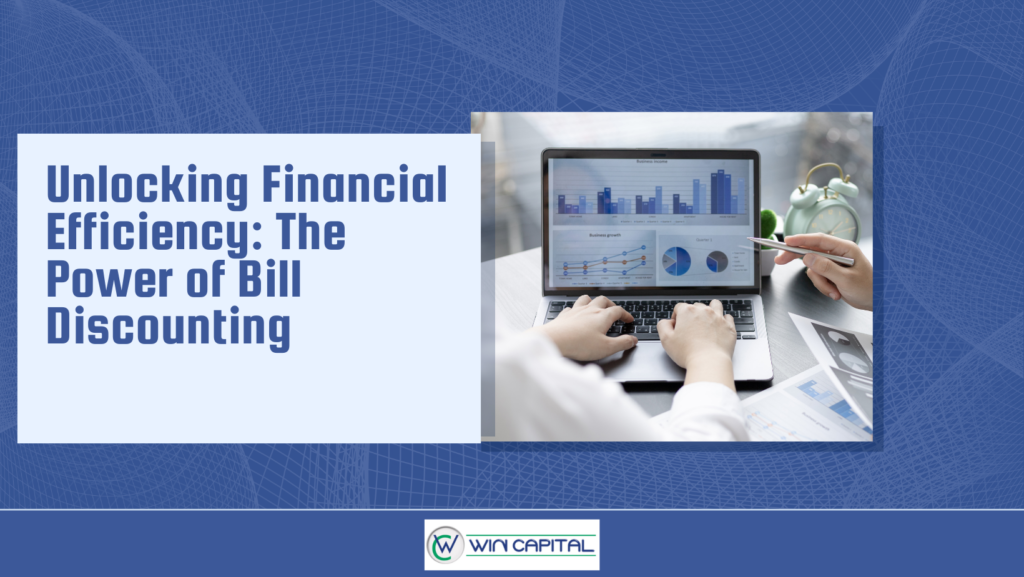Liquidity and agility are essential for corporate success in the finance sector. Bill discounting is a powerful financial tool that helps businesses maximize working capital, accelerate growth, and streamline cash flows. For businesses of all sizes, comprehending the benefits and workings of bill discounting can completely transform the financial scene.
Understanding Bill Discounting
Fundamentally, bill discounting is a financial strategy whereby a provider of products or services sells their trade receivables or invoices to a bank or financial institution at a discount in order to obtain immediate cash. Instant cash flow is made possible by the seller’s rapid access to funds that would otherwise be entangled in these receivables.
How Discounting on Bills Operates
- Initiation: An invoice with payment terms is sent by a company to clients who purchase products or services from it on credit. Bill discounting is an option available to the company instead of waiting for the payment deadline.
- Engagement with Financial Institution: The company goes to a bank or other financial institution and presents the trade receivables or invoices it wishes to have discounted. Before providing a lower rate, the organization evaluates the quality of the invoices and the creditworthiness of the company.
- Cash Infusion: The financial institution pays the company a portion of the invoice’s entire value up front after applying a reduction or other charge, as per the agreement.
- Repayment: Customers pay the bank or financial institution the entire invoice amount on the due date. The business has already got the discounted value, yet the financial institution receives the entire amount.

Advantages of Bill Discounting
- Improved Cash Flow: Companies don’t have to wait for customers to pay in order to fund operations, control expenses, and take advantage of growth opportunities when they convert their receivables into instant cash.
- Liquidity Enhancement: Businesses can reduce their dependency on short-term loans or credit lines by mitigating cash flow shortages through the provision of timely money.
- Risk Mitigation: Businesses protect themselves against potential client defaults or late payments by shifting the credit risk to the financial institution.
- Working Capital Optimization: Companies are able to allocate resources more effectively to revenue-generating activities instead of sitting around waiting for payments, which makes efficient working capital management possible.
Considerations and Challenges

- Discount Costs: While bill discounting provides immediate cash, the discount or fee charged by the financial institution impacts the overall profitability of the business.
- Creditworthiness Assessment: In order to negotiate better discount rates and gain the trust of financial institutions, businesses need to maintain a strong credit rating.
- Customer Relationships: Since the customer will be paying the financial institution rather than the firm directly, openness and communication are essential to preserving positive customer relations.
The Future of Bill Discounting
Bill discounting is changing as a result of technology, with digital platforms providing automated solutions for smooth invoice discounting. These platforms make it easy to access a wider network of financial institutions, expedite processes, and improve transparency.
Conclusion
Bill discounting is becoming a very effective financial strategy that helps companies expand by reducing risk, increasing liquidity, and promoting growth. Through smart use, it helps businesses handle the challenges of cash flow management more effectively and easily. Leveraging the benefits of bill discounting can be a keystone for long-term financial success as firms adapt in a constantly shifting economic landscape.



